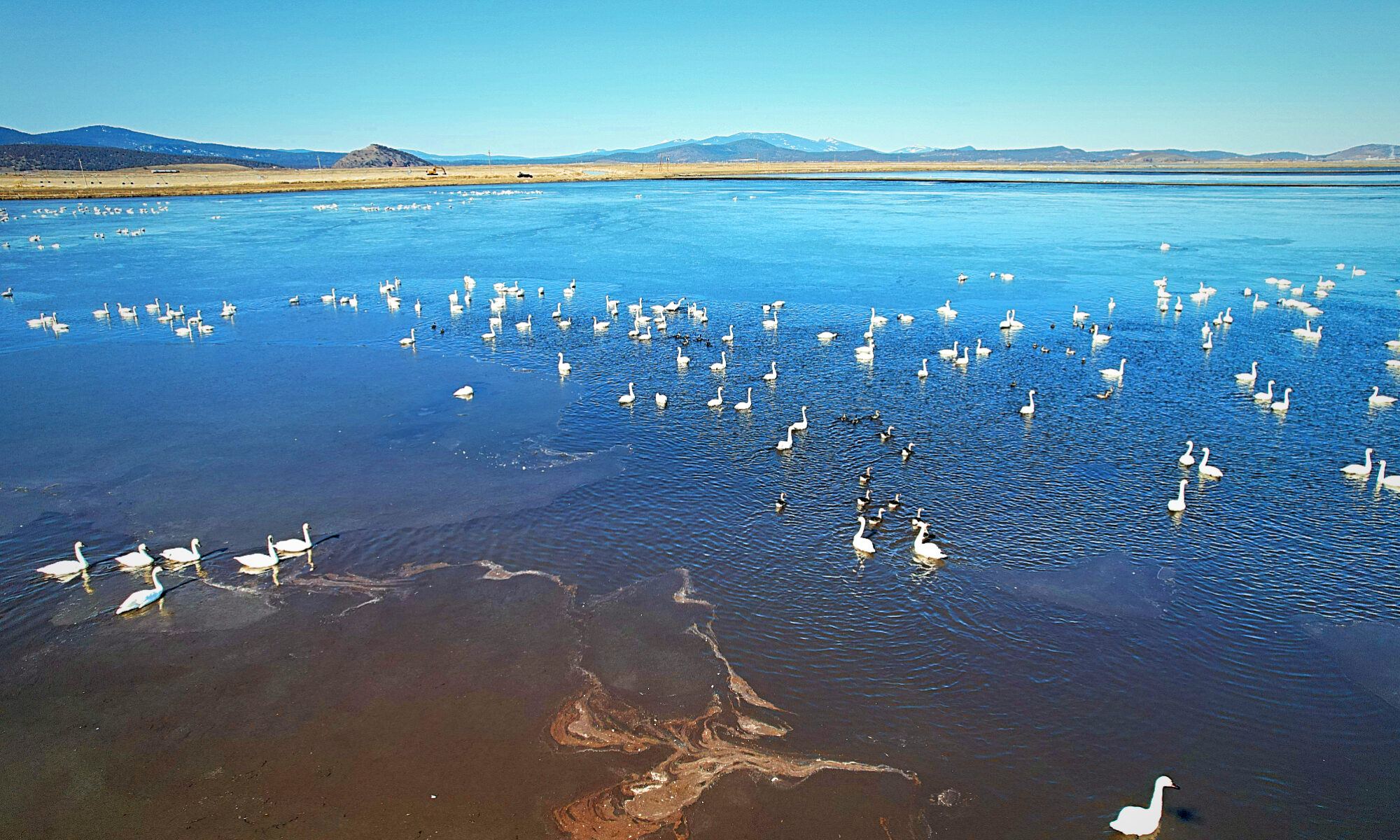Deputy Assistant Secretary of the Department of the Interior Matt Strickler recently paid a visit to the Klamath Basin and the Klamath Project as part of an “Opportunities Tour” put together by the Klamath Water Users Association.
 As a part of the June 14th-15th Opportunities Tour, Strickler visited the Klamath Drainage District and met with district manager, Scott White, and district supervisors Tracey Liskey and Luther Horsley. In their discussion with Deputy Assistant Secretary Strickler, they talked about the work being done and the partnerships developed with Ducks Unlimited, Klamath Watershed Partnership, Trout Unlimited, the Oregon Department of Fish and Wildlife, California Waterfowl, and many other stakeholders to benefit the Lower Klamath National Wildlife Refuge and the Klamath Basin wildlife that call it home.
As a part of the June 14th-15th Opportunities Tour, Strickler visited the Klamath Drainage District and met with district manager, Scott White, and district supervisors Tracey Liskey and Luther Horsley. In their discussion with Deputy Assistant Secretary Strickler, they talked about the work being done and the partnerships developed with Ducks Unlimited, Klamath Watershed Partnership, Trout Unlimited, the Oregon Department of Fish and Wildlife, California Waterfowl, and many other stakeholders to benefit the Lower Klamath National Wildlife Refuge and the Klamath Basin wildlife that call it home.
Below is a excerpt from the article “Deputy Assistant Secretary Strickler’s “Opportunities Tour”” that appeared in the June edition of Basin Ag News, provided by the Herald and News. The excerpt focuses on Strickler’s stop in KDD, but you can read the article in its entirety at Basin Ag News.
It is not every day that you get to interact with the Deputy Assistant Secretary of the Department of the Interior.
But Matt Strickler quickly makes one forget his official title, with his unassuming, down-to-earth demeanor.
Strickler, a long-time congressional staffer and former official in Virginia Governor Ralph Northam’s administration, is a seemingly good fit for the Klamath Basin, where stakeholders are still getting to know the Secretary of the Interior’s lead representative on water issues in the Basin.
On June 14 and 15, Strickler visited the Klamath Basin to meet directly with agricultural and tribal leaders, prior to a broader meeting of stakeholders on June 16. The Klamath Water Users Association took the opportunity to organize a tour of the Klamath Project, to look at and discuss concepts that could possibly benefit multiple stakeholders, including fish and wildlife.
The objective of this so-called “opportunities tour” was to demonstrate the capacity and willingness of agricultural producers within the Klamath Project to help solve some of the intractable problems related to water management in the Basin.
The first stop was Midland Hill, which offers a bird’seye view of Miller Island, the Tule Smoke Club, the Southern Pacific railroad embankment, and expanse of Klamath Drainage District and Lower Klamath National Wildlife Refuge. There, Klamath Drainage District’s manager Scott White, along with district supervisors Tracey Liskey and Luther Horsley, spoke briefly about the concepts being discussed among the district and other stakeholders based around the basic concept of reestablishing functioning wetlands within the Tule Smoke Club, Lower Klamath National Wildlife Refuge, and possibly beyond. Wetlands that could potentially be habitat for endangered Lost River and shortnose sucker (C’waam and Koptu).
Klamath Watershed Partnership, Trout Unlimited, and the Oregon Department of Fish and Wildlife are involved in this planning effort, among other stakeholders.
Strickler indicated he is hoping to identify a handful of large-scale projects towards which federal funding through the Bipartisan Infrastructure Act (BIL) can be targeted. The goal, Strickler said, is to get away from the perception of “random actions of restoration” that have traditionally characterized federal activities in the Basin.
Following Midland Hill, the group proceeded to the Ady Canal headworks and the terminus of the Klamath Straits Drain.
There, one can see the complicated nature of water management in Lower Klamath Lake, as the Klamath Straits Drain goes both over and under the headworks of the Ady Canal, and the remnants of the original Klamath Straits are still visible just north of the existing channel. The discussion there continued around river flows and potential for the district’s ideas to potentially benefit the Klamath River.
The group then drove to the district’s recirculating plant on Township Road, which is responsible for a large portion of the water that made it to Lower Klamath National Wildlife Refuge this past winter and spring. After a brief explanation of the pump’s workings, a quick drive down to the lower end of the Ady Canal led to the site where Ducks Unlimited (DU) plans to build a similar unit with a grant from the U.S. Fish and Wildlife Service. A trickle was then flowing through the Ady Canal into Unit 2 on the south side of Stateline Road (commonly known as Stateline Drain). These deliveries are being attributed to a complicated water right transfer from the Wood River Valley, when similar quality water in the adjacent drain is often available if the pump only existed to lift it.
Juvenile suckers have recently been transplanted into Unit 2, making the need for a secure water supply all the greater. Meanwhile the rest of Lower Klamath National Wildlife Refuge is bone-dry, with great clouds of dust blowing off the former wetlands.
After breaking off from Scott White and Klamath Drainage District, the tour continued down Stateline Road, looking at DU’s other planned pumping site on the west end of Stateline Drain.
You can read the rest of this article and more at Basin Ag News.


